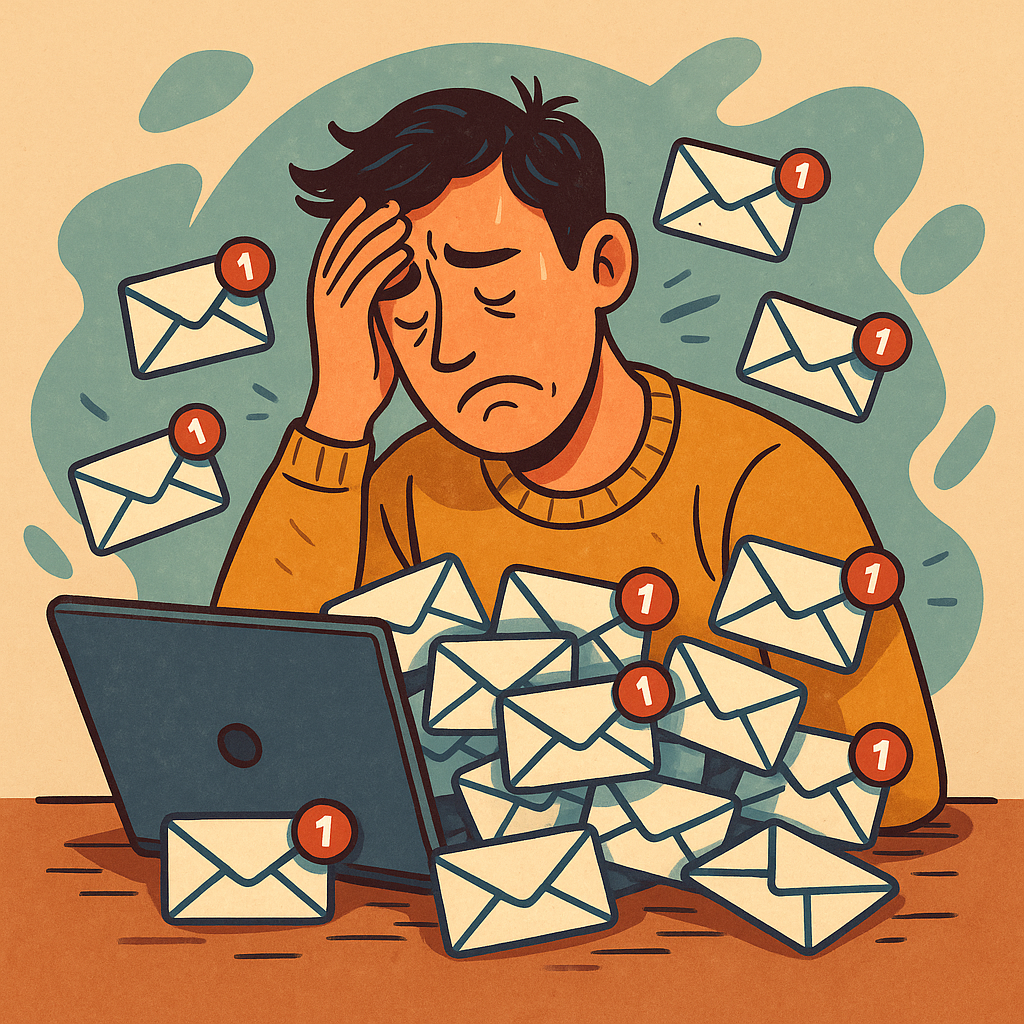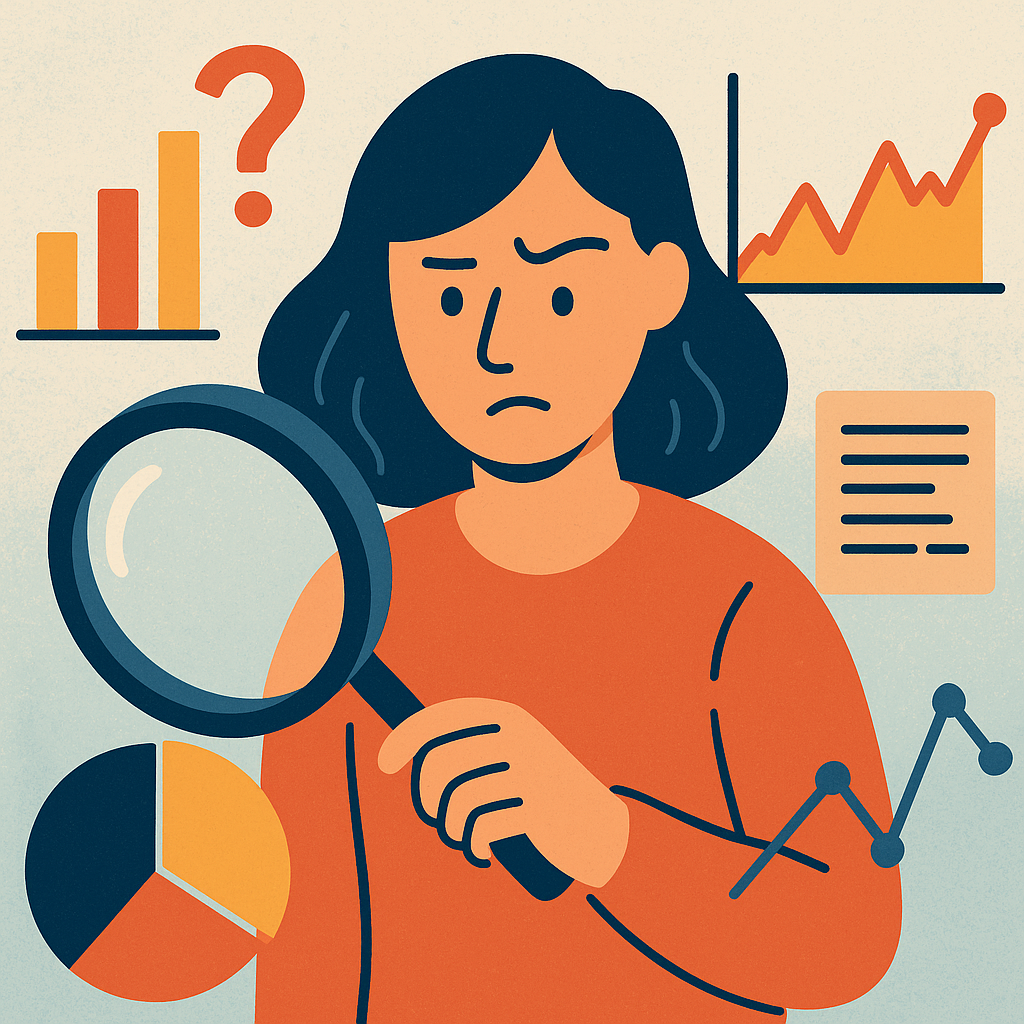Ever feel a knot of anxiety when your inbox hits triple digits? That emotional weight from “inbox overwhelm” isn’t imaginary—it’s real, and it’s affecting your productivity and mental health. In this article, we’ll explore the emotional weight of email clutter, why it drains your brain, and actionable steps to free yourself—without rigid hacks.

What Is the Emotional Weight of Email Clutter?
The emotional weight of email clutter refers to the mental burden imposed by a chaotic, overflowing inbox—marked by behind-schedule anxiety, constant distractions, and reduced focus.
Inbox Overload = Emotional Overload
- Stress and anxiety: A Psychology Today overview notes that “stress from overflowing inboxes” affects around 66% of professionals (InboxDone 2024).
- Elevated stress markers: UC Irvine researchers tracked increased heart rate and stress upon receiving work emails (Self.com 2024).
Cognitive Drain and Mental Fatigue
- Decision overload: Researchers report that high email volume leads to decision fatigue and decreased work performance (ScienceDirect 2023).
- Reduced focus: Every ping interrupts deep concentration—a mere deviation can cost up to 23 minutes to return to the original task (Wikipedia 2025).
Why Your Inbox Feels Emotionally Heavy
1. Technostress
Constant email notifications, expectations for immediate responses, and always-on connectivity fuel technostress—a modern psychological strain. Technostress, first identified in the 1980s, has evolved with the digital age, and email overload remains a central component of this modern stressor (Wikipedia 2025).
2. Digital Hoarding
The inability to delete even irrelevant emails is a form of digital hoarding. This behavior, comparable to physical hoarding, can trap individuals in a cycle of stress and anxiety. Keeping thousands of unread or unimportant messages can result in cognitive clutter and decision paralysis (Lifecycle Transitions 2024).
3. FOMO & Email Addiction
Email-checking triggers a dopamine hit, similar to gambling. The act of refreshing your inbox becomes a compulsive habit for many professionals. Each new message brings a rush of potential urgency or opportunity, and that behavioral loop leads to exhaustion and diminished emotional well-being (Wikipedia 2025).
Real-World Impact: What Studies Reveal
Burnout & Reduced Well‑Being
A large-scale survey linked email load with increased burnout, especially among remote workers who have fewer boundaries between work and life (ScienceDirect 2023). Constant exposure to workplace communication through email extends stress beyond office hours and impairs emotional recovery.
Work-Life Imbalance
- Emails after hours contribute to digital presenteeism, which is a form of constant, often unrecognized overwork.
- Microsoft’s research revealed that employees now spend about 60% of their working hours on email and messaging platforms, leaving only 40% for real productive work (New Yorker 2023).
- The knock-on effect is emotional depletion, where individuals feel constantly behind and anxious about keeping up.
Negative Self-Perception
Inbox clutter can lead to feelings of inadequacy. When you’re unable to “conquer” your email, it reinforces a sense of failure or chaos—especially for high-performers. This can cascade into imposter syndrome or burnout.
Actionable Guide to Reducing the Emotional Weight of Email Clutter
A. Set Mindful Boundaries
- Time-blocking: Reserve dedicated stretches (e.g., 9–10 am, 2–3 pm) for email triage. This helps reduce continuous partial attention and creates mental clarity.
- Notification control: Turn off non-essential alerts. Most emails aren’t emergencies, and your mental health shouldn’t pay the price for false urgency.
B. Declutter & Organize
- Unsubscribe ruthlessly: Use tools like Unroll.Me or your email provider’s filtering options to eliminate digital noise.
- Archive/archive/archive: Don’t hesitate to archive or move low-priority messages. This reduces visual clutter and eases decision fatigue.
- Use smart filters: Gmail, Outlook, and other clients allow smart folders or priority inbox settings. Use these to segment urgent messages from promotional or less relevant ones.
C. Delete Without Guilt
- Apply the “one-year rule”: If an email hasn’t been opened in over 12 months, it likely has no relevance.
- Combat digital hoarding: Schedule a 10-minute weekly “purge session.” Seeing even 100 fewer emails can psychologically uplift you.
D. Optimize Your Workflow
- Batch processing: Reply to similar queries together rather than handling each message individually.
- Automate responses: Draft templates or use AI assistants to streamline frequent replies.
- Delegate wisely: If feasible, train a virtual assistant or team member to handle common queries.
E. Build Digital Habits
- Email fasts: Try no-email Sundays or phone-free dinners. Reclaim your peace.
- Out-of-office signals: Let people know when you’re not checking email, and model that it’s okay to disconnect.
- Expectation setting: Train your team or clients to respect boundaries. Often, constant communication habits are socially learned—and can be unlearned.
Emotional Benefits You’ll Feel Quickly
- Calmer mornings: No rush to “catch up.”
- Improved focus: You’ll engage better with work, friends, and family.
- Mental space to breathe: Without the burden of pending messages, your creativity will improve.
- Better sleep: Reduced nighttime email-checking means less blue light and fewer stressors before bed.
- Restored self-esteem: Taking control of your inbox is a subtle but powerful way to reclaim agency in a chaotic world.
Why This Trend Matters Now
The Shift to Remote and Hybrid Work
Post-pandemic work models have amplified the emotional weight of email clutter. Without physical separation from work, emails become omnipresent. This makes boundary-setting more important than ever.
Email Overload Is a Workplace Epidemic
Organizations are finally recognizing that email isn’t just a tool—it’s a stressor. Several forward-thinking companies have begun implementing “email-free Fridays” or “inbox-cleanup hours” to mitigate emotional exhaustion.
Rise of Minimalist Digital Wellness
Just like minimalism gained traction in home decor and lifestyle, inbox minimalism is the next evolution in digital well-being. More users are opting for radical decluttering approaches—like zero-inbox goals or hiring professional inbox managers.
Summary
The emotional weight of email clutter isn’t just about being disorganized—it’s a deep psychological burden. From increasing stress and anxiety to impairing focus and mental well-being, overflowing inboxes can wreak havoc on your emotional state. But with small, practical changes—like boundary-setting, automation, and decluttering—you can turn your inbox from a source of stress into a tool for productivity and peace.
References
Trimbox – “Email Decluttering for Mental Clarity”
https://www.trimbox.io/blog/email-decluttering-for-mental-clarity
InboxDone – “Psychology of Email Overload: What Studies Show”
https://inboxdone.com/psychology-of-email-overload/
Psychology Today – “Feeling Email Overload?”
https://www.psychologytoday.com/us/blog/through-the-social-science-lens/202011/feeling-email-overload






